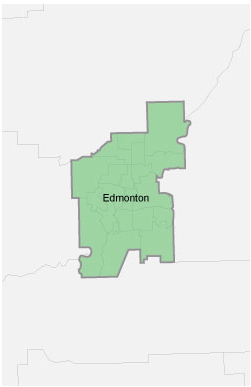Why sewer backups happen
Your sewer service pipe carries wastewater from your home to the main sewer line located beneath the street or in the back lane. Problems with the service pipe may cause sewage to backup into your basement. If you are experiencing a sewer line backup call our 24/7 emergency line at 780-412-4500.
We provide a basic service, for a fee, to help diagnose drainage problems with your main sewer service line. Learn more about the responsibilities for property owners when it comes to the portion of the sewer service line on your property.
Typical sewer backup causes
Plugged internal plumbing
Drainage problems such as clogged sinks, bathtubs, floor drains and toilets that flush poorly are considered internal problems. Internal problems are often the result of drain clogs close to the source. Plugged or partially clogged sinks are typically caused by blockages in the drain pipe, and often a result of a clog in the P-trap, or u-shaped section of the drain pipe. Most of these cases can be diagnosed over the telephone.
For these types of internal issues we recommend that you call a qualified plumber.
Learn how to properly dispose of fats, oils, greases and solids (FOGS) to prevent sewer backups and blockages.
Plugged or partially clogged sewer line service
Oversized objects may plug your sewer service causing water to backup through the floor drain. Some of the most common objects include rags, paper towels, baby/bathroom disposable wipes, hair, underwear, grease buildup and children's toys.
If you have a sewer backup or flooding call our 24/7 emergency line at 780-412-4500. A fee will be charged if the blockage is caused by prohibited waste items regardless of where in the service line the blockage is located. This same service is also offered by private plumbers, but please note that EPCOR will not reimburse plumber's fees regardless of where the blockage is located.
Tree roots damage sewer lines
Trees have roots that may grow and intrude into sewer lines. Roots in sewer lines can cause backups in your basement.
Rodding equipment used by private plumbers may remove some roots but a significant quantity will remain. Root removal by this method has an effect similar to pruning a hedge and actually encourages further growth. In many cases, roots may be treated with a herbicide that both removes existing roots and also inhibits future growth for 3 to 5 years.
Severe root intrusion, such as a pipe full of roots, may require a repair or replacement of the sewer service. Roots that are not removed will continue to grow and exert pressure at the crack or joint where they entered the pipe and may cause the sewer line to collapse.











